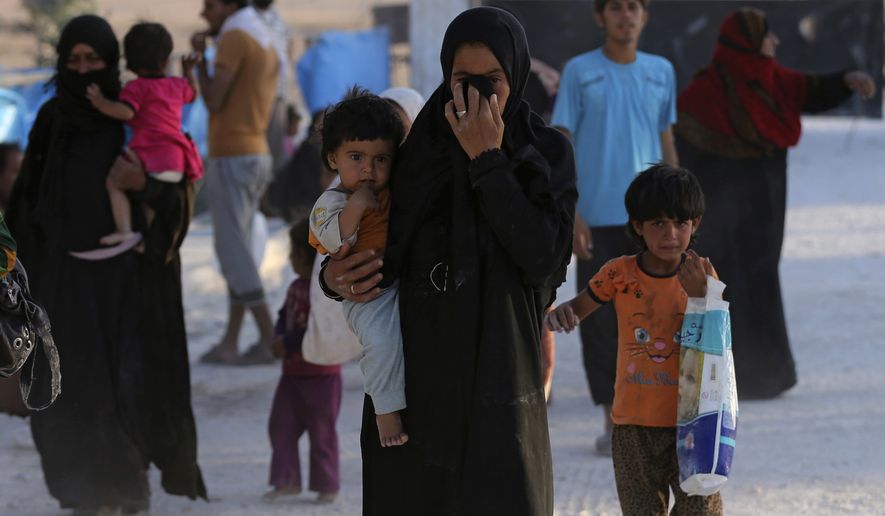
'At an austere mental health clinic in northern Syria, male patients with shaved heads squat barefoot in a courtyard, some dressed in uniforms and others in T-shirts and tracksuit trousers.
One man screams at those around him, while another laughs to himself. A third sings exuberantly, exposing bare gums missing teeth.
The second floor houses female patients in patterned dresses and flowery headscarves. Some smile at visitors while others lie motionless on their beds.
One woman is tied to her bedframe.
The horrors of Syria’s six-year war have left the country’s population with devastating psychological scars, but staff at the only mental health facility in Syria’s opposition-held north are doing their best to treat those affected.
Among the patients at the clinic in Azaz, northern Aleppo province, is a 17-year-old girl deeply scarred by the conflict.
“She saw a small child that had been killed and was being eaten by animals,” said Dorar al-Sobh, one of two doctors at the facility.
“She was so shocked she lost her ability to speak. Now she can’t sleep or eat… She avoids everyone.”
A male patient from the neighbouring province of Raqa came back to his bombed-out home to find the lifeless bodies of his wife and six children.
“He has difficulty sleeping… he gets flashbacks and nightmares,” says Sobh, 46.
Some cases predate Syria’s conflict, but others – particularly of post-traumatic stress disorder – have been directly caused by the war. “Of course, we have seen an increase in cases, especially depression, PTSD and coping disorders,” Sobh says.
Nurse Mohammed Munzer recalls receiving patients who had been arrested at the peaceful protests in 2011 that kicked off Syria’s uprising.
“They were tortured and beaten, especially on the head. They started to have mental problems,” the 35-year-old says.
Others have developed anxieties related to the relentless bombing and violence that has killed more than 330,000 people.
“There are people who can’t handle the sound of aeroplanes,” Munzer says.
The facility serves nearly 140 inpatients as well as others who come from outside for care.
It was originally set up in Masaken Hanano district on the northeastern outskirts of Aleppo city.
But it was forced to relocate when fighting broke out after rebels entered the city in 2012.
“The hospital was hit in Masaken Hanano, wounding one of the nurses in his hand and handicapping him,” facility administrator Mohyiddin Othman says.
Many of the hospital’s medical staff fled and left patients behind, some of them wandering the streets.
Local residents, alarmed by the situation, contacted a Turkish medical NGO that worked with local Syrian doctors to transfer the patients.
By 2013, they had been moved first to a facility in western Aleppo province, and then to Azaz with help from charity group Physicians Across Continents.
While Azaz has been periodically targeted by regime strikes, particularly in the early years after the patients were moved to the area, the new hospital has not been hit.
That has allowed medical staff to focus on their work, offering residents and outpatients medication, assessments and one-on-one treatment.
At times they struggle to help those in need, such as a man who regularly visited Sobh to seek treatment for depression.
“I asked him once about suicide. He told me he didn’t think about it,” Sobh said. “Fifteen days later he shot himself.”
The hospital also faces shortages of medicine. It receives occasional donations from the World Health Organization, but often relies on alternatives bought on the local market or in neighbouring Turkey.
The challenges can feel overwhelming, the facility’s staff say.
“We are psychologically exhausted,” says Sobh. “Sometimes our patients hit us or curse us… Sometimes we take vacations to distance ourselves from the atmosphere of the hospital for a few days.”
The facility’s basement is set aside for a kitchen and a cafeteria, where residents queue for food.
Standing at tables or seated on the floor, they eat meals of stew and bread from metal bowls.
The facility is sparsely furnished, with long rows of beds for patients and washing lines hung with blankets.
In one room, a television is mounted on the wall, and patients sit together watching.
The staff also do outreach in the community, hoping to tackle the stigma around mental health issues.
“We try to spread awareness in our surroundings, and through flyers and social media, to explain that people who have mental illnesses are like anyone else who is sick,” says Munzer.
Sobh says the growing need for mental health care has caused a subtle shift in local sentiment.
“The presence of a treatment centre in this area is positive,” he says.
“The residents of the area accept it, and it’s no longer a sign of weakness.” '

















